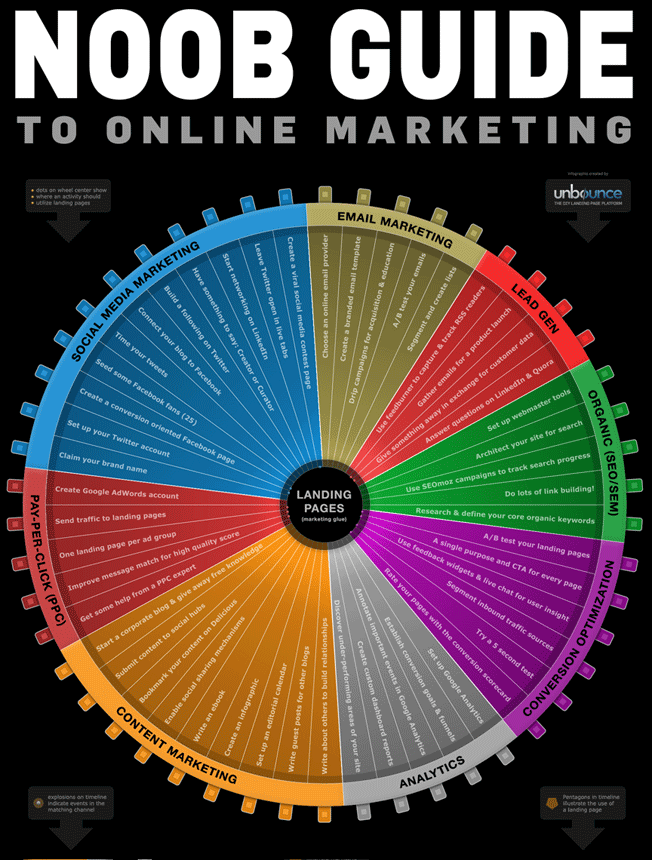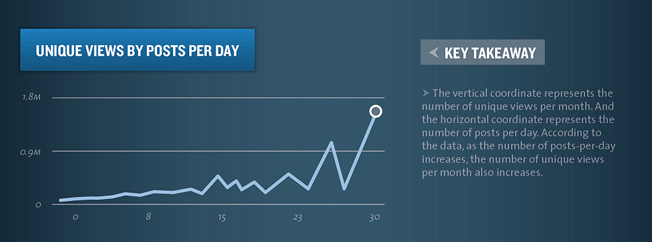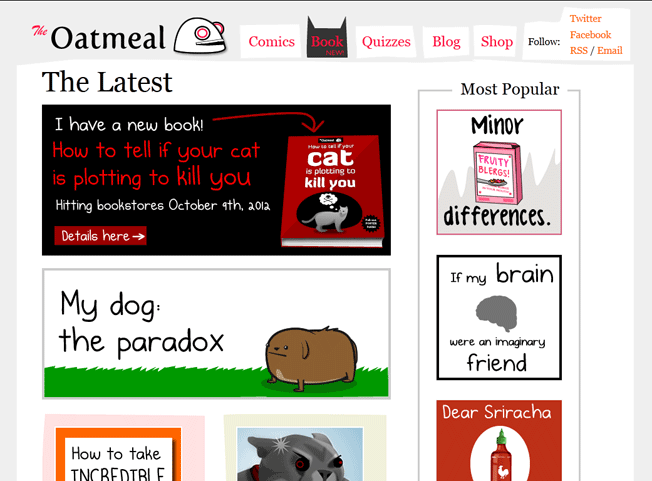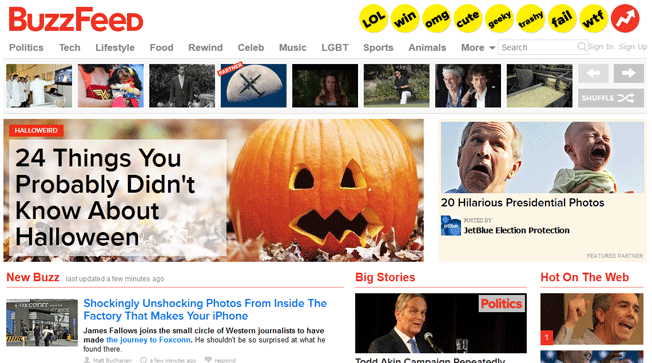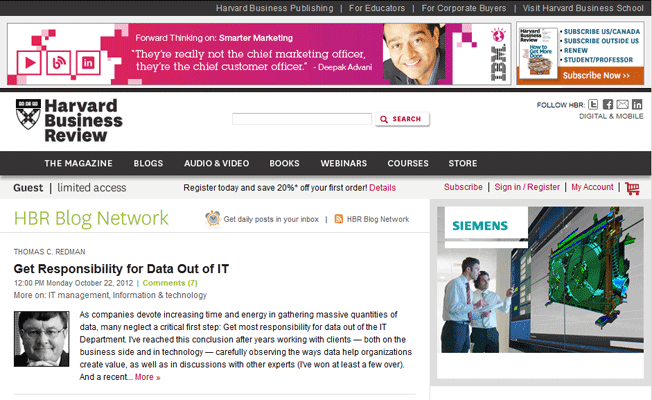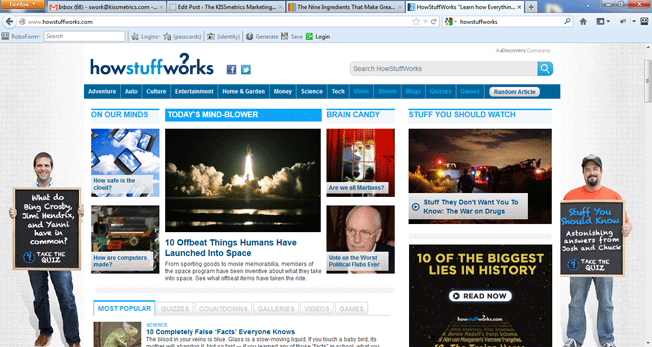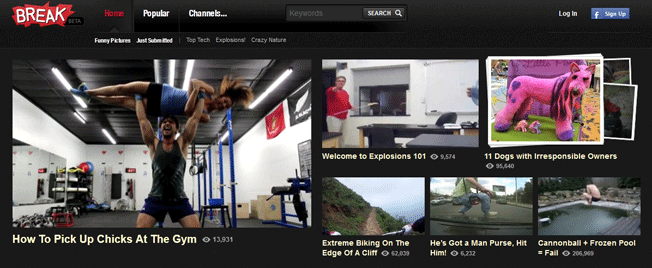Writing great content is a choice. You can choose to put in the time and work required to create great content and build a prosperous brand. Or you can choose to take the easy path and write poor content – a path that ultimately will get you nowhere. It will only result in a waste of time, energy and resources.
The path for content marketers is clear. In order to boost SEO rankings, gain traffic and/or leads, you need to have great content on your blog or website.
If you write original content, search engines will help your site get more exposure. For instance, Google has made it plain that they do not like and will penalize sites with duplicate content. Put another way, Google wants to reward high quality sitesthat contain original content. So not only does great content make a better website, it also improves your site’s rankings, which can have a very positive impact on your business.
Whatever your reason for having a content site, whether it’s for business or a personal hobby, it’s important to do it right. In this blog post, we’ll break down some tips for developing great content.
First, let’s look at what makes great content, and then we’ll move on to sites that produce great content.
1. Create Original Content
As mentioned, original content goes a long way with Google and your visitors. Copying other people’s content will result in a punishment from Google, which can crush your bottom line.
Want proof?
Remember when you used to find ezine articles in top Google rankings? You don’t see them anymore, and it’s no accident. They were one of the hardest hit by Google’s algorithm update, which aimed to prevent bad content from ranking highly.
Mahalo was a content farm that updated every day with new content, but it wasn’t original content. Google punished them for it, and that resulted in Mahalo needing to pivot their business.
But let’s take this a little further. Original also means originality. Your ideas should be original! Rehashing the same concepts or other posts over and over again is not original. If your content is played out, no one will link to it – and that defeats the purpose of writing content in the first place.
Here’s the train of thought that most website owners have (thinking that gets them in trouble):
“So it says here that we need to create a lot of content…OK…well how can we do this as easily and cheaply as possible?”
“Can we make a bot to scrape content and re-combine it into some form of gibberish that at least the search engines will read?”
“Can we outsource cheap, near slave labor priced, content writers to write filler content?”
“Can we collect articles from around the web and just get permission to re-post them?”
STOP THINKING THIS WAY!
Remember these two rules in life:
- You get what you pay for.
- If you don’t have anything useful to say, then don’t say it at all.
These two simple points will keep you on the path of making quality content that will yield returns for years to come. They can also help in other aspects of your life.
2. Always Focus On Creating Strong Headlines
A good headline sparks interest and invites readers in. Consider these great statistics from Copyblogger:
- 80% of people will read your headlines.
- But only 20% of those people will read the rest of your content!
And that is why the headline is as important as the article or post itself.
Let’s look at a few good headlines:
The sub headline in the panel below is spectacular. Even though the fear of being eaten rarely enters a civilized human’s mind (unless the person was out in the wild), this author argues that it “define(s) who we are.” You can’t help but be a little curious.

Because no one wants to look dumb:

Here’s one from KISSmetrics. The “Shocking Truth” sparks the need-to-know information:

Nutritional differences aside, which would you rather snack on — french fries or cauliflower? If all things except taste are equal, most would say fries. But what if you could get the nutritional value of cauliflower with the taste of fries? Pretty enticing:

This title sounds good, is positive, says a lot in only a few words, and excites the reader’s interest for what’s in the message:

Take time with your headlines. If possible, make a few and select which one you like best. Don’t skim over them. They are the first thing people read, and they are the basis those people use to decide if they want to read your article or not.
3. Make Your Content Actionable
What was the last blog post you wrote? Did it give readers advice on how they can apply the lessons right away?
Unbounce’s Noob Guide To Online Marketing might be the greatest example of actionable content ever:
The best content gives the user a sense of how to apply the information. It doesn’t degrade users by telling them what to do, but rather respects them and provides them with assurance that they know best how to use the material. When you write your blog post, give users tips on applying what you are offering them. Many times, just writing well about a topic will spark some ideas for readers.
Why do people read non-fiction? To learn and become better. Help your readers do the same.
4. Be Able to Provide Answers
What is the ultimate purpose of a search engine? Most people would be correct in saying “to deliver sets of answers.” Google is great at this. Type a query into Google and you’ll be presented with links, pictures, and videos.
When people use a search engine, what they ultimately want is an answer, and it’s the search engine’s job to deliver that answer.
It’s the same when people are reading a blog post, viewing an infographic or watching a video — they want an answer so they can gain knowledge. An additional tip here is: people don’t just want answers, they want answers fast. So make your content easy to scan so people can pick up the juicy, important bits quickly.
Read any title and subtitle of a non-fiction book or article. Ultimately, what it leaves the reader with is a question or a sense of curiosity. It is then the author’s job to deliver answers and have supporting information.
5. Be Accurate in Your Reporting and Sourcing of Information
Think about this: you write an article for your company’s blog, thousands of people read it, and some of what you wrote turns out to be inaccurate. Can you imagine what damage this can do to your company and your personal reputation? Keep in mind, your blog is a reflection of your company. If there are any issues with the blog, it impacts how people view your product.
It’s important that any statistic you state can be verified. Many blog posts will link right to the statistic and the source.
Accuracy builds trust with readers. Remember James Frey, author of the popular book A Million Little Pieces? He had to go on the Oprah Winfrey show and admit that the book was made up of lies. He has written a few books since then, but he likely will be remembered as the guy who made up his memoir, instead of as the writer of his other published works. It has permanently damaged his career.
If you’ve ever seen the fantastic movie Shattered Glass or followed Stephen Glass’s fall from grace, you can see the devastating effect that inaccuracy can have on your career.
Here are some tips to think about when you’re mulling over the issues of accuracy:
- Consider who you are linking to. Are they a trusted and authoritative source? Linking to other quality websites will earn more trust from your readers.
- Linking to more content can only help. The more you can back up and substantiate what you are writing about, the more trusted your content will become.
- Help the search engines out. Linking to other sources and content will help the search engines figure out what your content is about, and how it should be categorized.
6. Create Engaging and Thought Provoking Content

An engaged audience hangs on to your every word and takes in all that you write or say. But the only way to get an engaged audience is to make engaging content. It all starts with you and what you write. Here are a few tips to help you write engaging content:
- Leave readers with questions. This doesn’t mean to have an incomplete post, but rather to include questions that make readers reflect on how they can implement the knowledge you provided.
- Have an important and promising introduction. Ever wondered how quickly people make judgments about blog posts? Most people probably decide within the first few sentences if the post is worth reading. Tell users why they should care and what you’ll be discussing in the blog post. Make them want to read it.
- People love stories. You can use an anecdote in your introduction or have a story woven into your blog post. Stories can also help clarify a point. When possible, add a story to your blog post. It will make it more engaging and may also help the reader learn.
A final tip on this point: If you provide content that sparks a flurry of comments, the search engines will notice that your post is important and is being updated regularly. This is a great way to get the engines to come back to your site more frequently.
7. Communicate Better by Adding Images and Video
You already know that people learn differently. Some people learn better by seeing, while others learn better by hearing. What’s important is that no one learns less by having visual aids. Whether you use pictures, videos, or diagrams, they can help illustrate your point. Open any modern textbook and you’ll find pictures used to enhance the reading experience and to reinforce the author’s lesson.
Whatever you’re writing about, add pictures. No one wants to look at paragraphs of text, unless you’re writing a book. However, only add images that help or add value. And please – for the love of your readership – stay away from unnecessary stock photography!
8. Write Short and Pointed Content
One of the best writing lessons I’ve learned is to eliminate fluff. It’s challenging and takes work, but it makes for a significantly better composition.
There is nothing better than a brief, to-the-point blog post or article that is filled with information.
So don’t focus on word count. A longer blog post does not mean a better blog post. And often, keeping a blog post short is more difficult and actually takes more time than just writing as much as you can.
For more information on word count, check out this HubSpot blog post.
9. Make Continual Updates to Your Website or Blog
Starting a blog or website is a commitment. While you can write a couple of posts and then abandon the work, you won’t get many readers or new customers. Not just that, but search engines don’t favor sites that aren’t regularly updated.
If you have a blog or content site, you need to update it regularly with great content. Many of the best content sites are regularly updated.
According to our Science of Social Timing infographic – sites that post more frequently have a surprisingly stronger influx of visitors:
How often should your blog or site be updated? That’s up to you. Everyone has different resources and priorities. You should make an effort to update at least twice a week. It is a content site you’re building, after all.
A few final points about writing content:
Don’t treat a blog post or any other sort of content site lightly. It’s difficult, and good ones take time to research and write. Proper title, grammar, and organization are a must. When you reread your post, ask yourself:
- Are there any words I can take out?
- Have I given the readers the best information I possibly can?
- Is it complete?
Now, let’s look into some websites that provide great content.
The Oatmeal
The Oatmeal is a website featuring humorous comics. Humor is easily shared, and you’ll find any comic on the website has thousands of tweets and Likes.
One of The Oatmeal’s most popular posts is Ten Words You Need to Stop Misspelling. Why is it so popular? People can relate to it — have you ever gotten frustrated with people not spelling correctly? Beyond that, the piece is also funny, quick to read, original, and entertaining.
What makes it great:
- The site is fast
- It’s insanely funny and original
- There is tons of content to keep you rolling for hours
BuzzFeed
What three-month-old post on BuzzFeed has nearly 2,000,000 Likes, 53,000 tweets, and has been shared via email 21,000 times?
You guessed it, the 21 Pictures That Will Restore Your Faith in Humanity post.
So why have millions of people shared it and millions more viewed it? As the title suggests, it’s a positive, makes-you-feel-good post. Also, people like viewing pictures, and each picture in this post helps to tell the story.
What makes it great:
- Buzzfeed is updated frequently
- It’s a site that actually is for everyone
- It’s easy to read
Harvard Business Review Blog
The Harvard Business Review blogs are a must for anyone interested in leadership or any entrepreneurial topics. They feature some great writers and guest writers, including some CEOs and Harvard Business School professors.
What makes it great:
- Updated every weekday with plenty of new articles
- Great advice for anyone interested in entrepreneurship
- A variety of articles
- Original and actionable content
Wonkblog
One of my favorite blogs is the Wonkblog. It takes a look at current events and breaks down the facts. There are plenty of charts, and the blog is updated daily with a variety of important topics.
What makes it great:
- Covers the data and facts within the day’s news
- Frequently uses charts to visualize the data
- Discusses small, impactful stories that don’t make the nightly news
- Original content
HowStuffWorks
HowStuffWorks first started out just as the name indicates — explaining how things work. Over the years, it has become a full-fledged educational site. HowStuffWorks doesn’t serve any niche. Instead, everyone can get something out of the site.
What makes it great:
- Uses video, pictures, and flash animations to help readers learn
- Learn almost any topic
Break
Break is a men’s humor site containing pictures and videos. It’s not targeted to everyone, and many people may be turned-off by the jackass-like humor. However, it has worked for Break. Targeting their content toward a demographic is what has led to their profitability.
What makes it great:
- Occasionally posting original content from in-house content creators or users
- Updated daily with new content
Writing great content is never easy, but it becomes much easier when you write something that you’re passionate about.
The wonderful thing about content is that it’s timeless. You can write something today, and three years from now it will still be out there being viewed and shared, which brings traffic back to your site.

